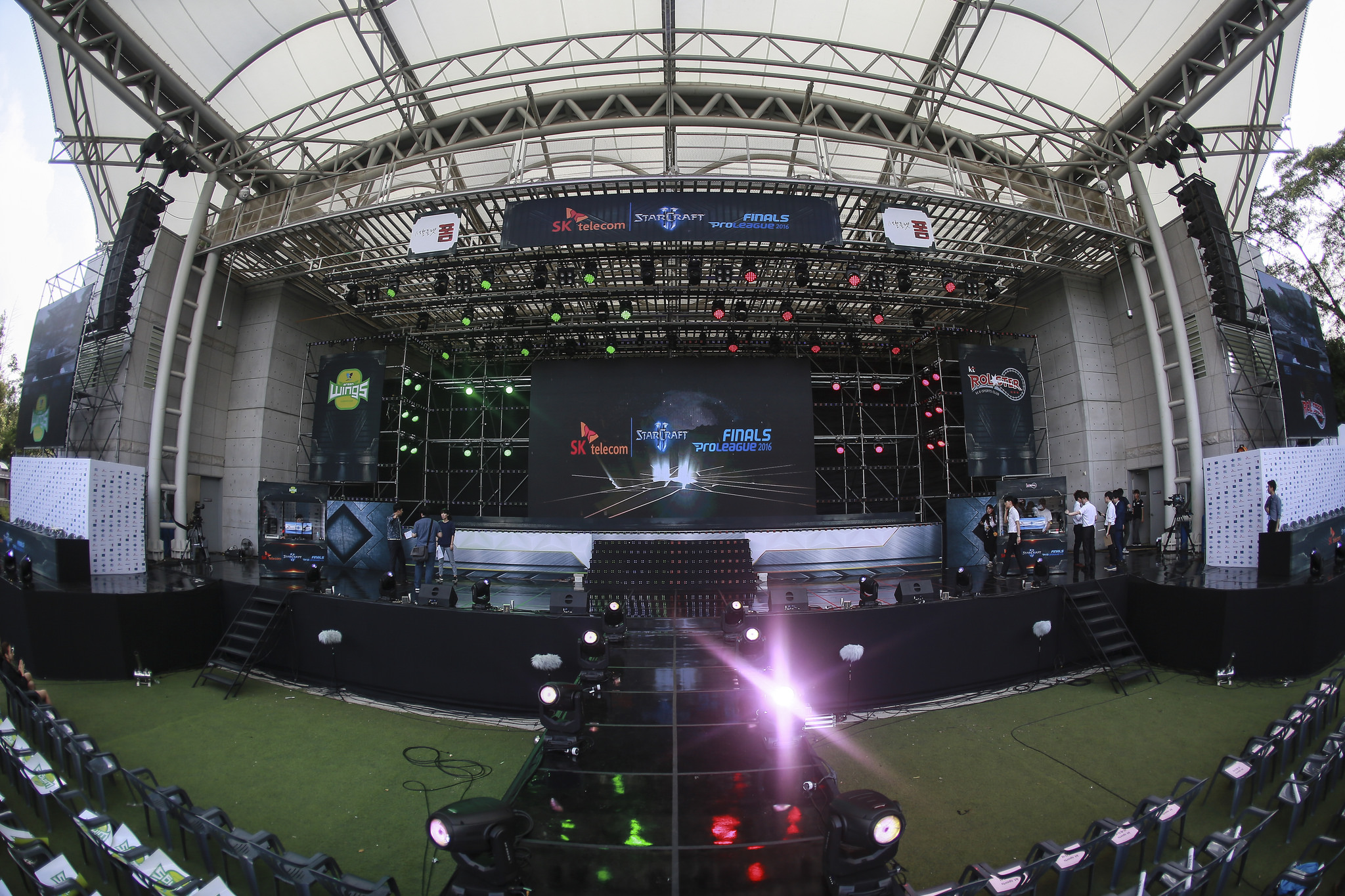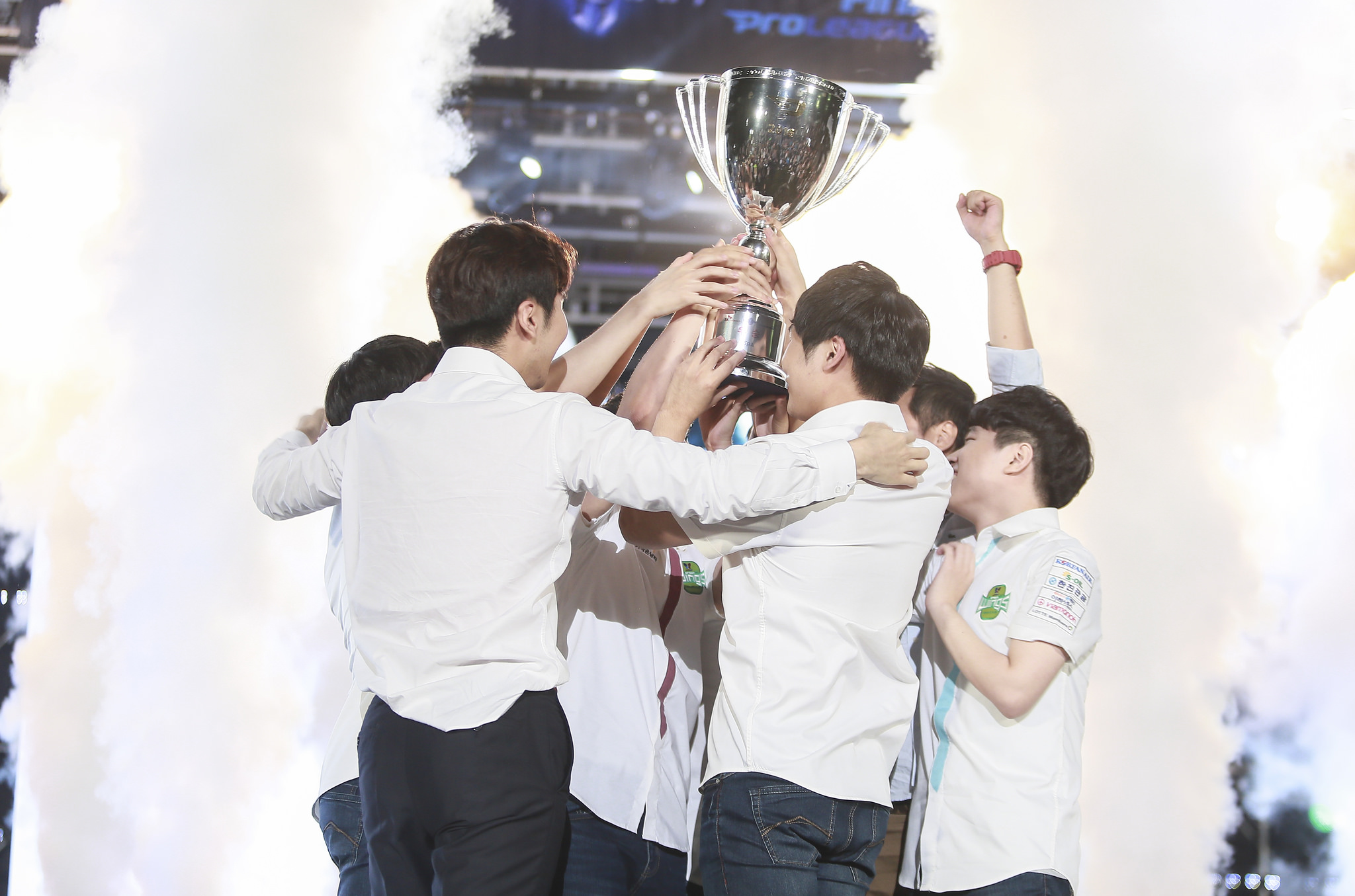Why Korea’s StarCraft II scene crumbled
Proleague is over. What's next?

Photo by @kenzi131.
After thirteen wonderful years, a cornerstone of esports history has officially ended. Proleague, the premier team-competition of StarCraft in Korea, is no more. In a Facebook statement, KeSPA announced the discontinuation of the league that dates all the way back to 2003. Rumors of its demise had been floating around the SCII community for a while, most recently re-fueled by KT Rolster’s players supposedly moving out of their practice house. The community’s fears proved true, as not only has KT Rolster’s StarCraft team closed down, but SK Telecom T1, Samsung Galaxy Khan, CJ Entus and MVP have all followed suit. Jin Air Green Wings will apparently hold on to their players; Afreeca’s fate is yet uncertain.
Easy to say in retrospect, but certainly known to a large part of the community was the fact that StarCraft II was always a bit shaky in Korea. Attempting to break down all the different aspects that factor into it is difficult, but I will try to summarize them adequately.
StarCraft II’s history in Korea begins even before the game was released. Its predecessor, StarCraft Brood War, is to this day referred to as the origin of all esports. What is now a global phenomenon with League of Legends, Counterstrike, and Dota 2 was already established in Korea over ten years ago. The Ever OSL in 2007 produced this video as their intro, something that would impress most spectators even today. Lee ‘Flash’ Young Ho, StarCraft’s equivalent to LoL’s Faker, entered the finals of a 2010 OSL in an airplane. The game attracted enormous sponsors that stuck around for years. I bring this up to establish an idea of the standards that were set by the original StarCraft. That game that was never meant to be played professionally, but it grew into an esport naturally in Korea.
Blizzard approached StarCraft II with esports in mind from the very start. The sequel was to be a game that would expand upon the success of Brood War and fill stadiums. But it never quite did. Blizzard soon entered into an Intellectual Property Rights conflict with KeSPA (the Korean e-Sports association) over broadcasting rights for StarCraft II. Blizzard eventually decided to partner with the Global StarCraft League (GSL) instead of OGN or MBC Game. KeSPA, whose member teams held all the Brood War talent, reacted harshly and barred its players from entering StarCraft II competitions. The conflict resulted in a deep split between KeSPA, which still held Brood War tournaments, and the fresh StarCraft II scene—hostility that definitely did lasting damage.
KeSPA eventually realized that the world had accepted StarCraft II as a global esport, and began to venture into the new game in 2012, shutting down its Brood War leagues and moving them over to StarCraft II, including the prestigious Proleague—the league sponsors were most interested in. During Heart of the Swarm, viewership numbers were increasing in Korea, likely due to the game being more exciting to watch, but mostly because huge names from Brood War with large followings were beginning to shine in StarCraft II as well.
But the StarCraft II scene in Korea had arguably already been bloated with talent, and the situation definitely worsened when KeSPA’s huge rosters all at once plunged into SCII. KeSPA teams had immense sponsors backing them, companies like SK Telecom, KT Rolster or Samsung—financial support the SCII scene never had before. But to any company, sponsorship is part of a business plan, one that only works out if it reaches a large enough target audience. That audience simply was not there for StarCraft II. Not only did the KeSPA switch drive out a lot of middling StarCraft II players that could no longer keep up, it also became obvious soon that even the biggest Korean teams could no longer sustainably keep all their players. Huge retirement waves followed, as teams like Woongjin Stars and STX Soul, despite being very successful in both Proleague and individual competitions, disbanded entirely. At this point, the issue staring StarCraft II in the face was apparent to the community for the first time: the Korean audience did not appreciate StarCraft II enough to keep big sponsors involved in the same capacity as in Brood War.
The biggest gaming news, reviews and hardware deals
Keep up to date with the most important stories and the best deals, as picked by the PC Gamer team.

Photo by @kenzi131.
Competition with other games did not help the case either. League of Legends is huge in Korea. Every single report that I can remember about PC Bangs in Korea over the last few years has shown LoL to be by far the most popular game. As of late, Blizzard’s newest title Overwatch has also garnered huge attention in Korea and introduced yet another competitor to StarCraft II. And with interest in Brood War never fully fading away, a lot of its former players have made the switch back to playing or streaming their original game. That leaves StarCraft II in its current situation—surrounded by three huge esports titles that don’t appear to be stopping anytime soon; games that bring in large sums of money (LoL), all the attention of potential talent (both LoL and Overwatch), or have kept its original following in the same genre (Brood War).
The fate of Korean StarCraft II is now wide open. One example of how a living could still be made is ByuN, who had already left the traditional team structure a while ago to pursue a new approach on a Chinese team, while competing in online competitions frequently. With all their contracts now void, these players are now free to stream or compete online, which was often forbidden by their teams to avoid strategy exposure. Depending on Blizzard’s announcement of the WCS 2017 system, some may choose to leave Korea to play for international teams. Their skill level is still very high, and the talent of players like Zest, Dark, soO, Solar, Classic, INnoVation and others has been blatantly obvious over the years. Not all is lost, but StarCraft II will never be the same.

